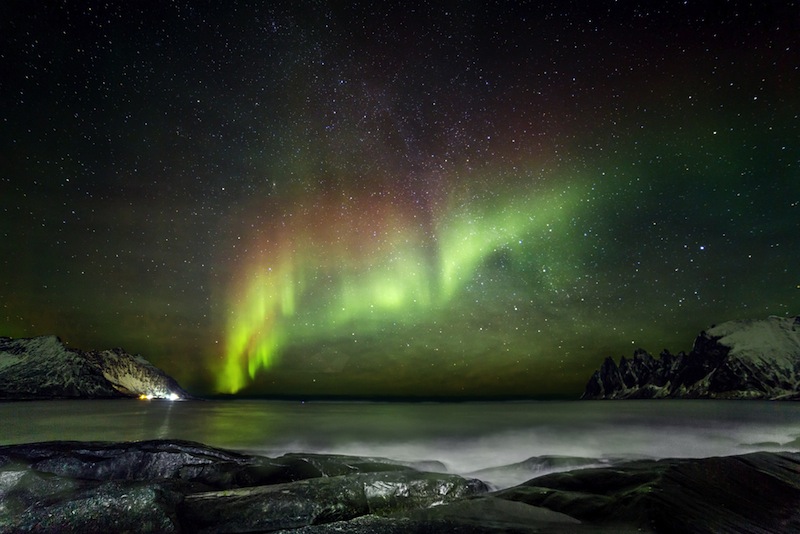Illuminating Tweets: Northern Lights Tracked via Twitter

Thanks to Twitter, the chances of spotting the aurora borealis are getting better, scientists report.
People are willing to stay up all night in freezing weather for a mere glimpse of the northern lights. Monitoring tweets about auroras can provide accurate and timely alerts of when and where auroras are visible from the ground, said lead study author Nathan Case, a space weather scientist at NASA's Goddard Space Flight Center in Greenbelt, Maryland.
Case is one of several NASA scientists, led by Elizabeth MacDonald of Goddard, who is mapping auroral activity with the help of tweets and citizen-scientists, with funding from the National Science Foundation.
Visitors to the project's website, Aurorasaurus.org, or people using phone apps of the same name, can report aurora sightings and describe what they see, along with posting a photo. Users can also receive real-time aurora alerts.
The website also searches Twitter for tweets that are likely to be aurora reports. Volunteers check that the tweets are actual aurora sightings, not musings about the Disney princess. "Many previous studies have shown it's very difficult to understand from a tweet what a user is saying, so the best way is to have someone verify the tweets as real aurora sightings," Case said. [Aurora Photos: Northern Lights Dazzle in Night-Sky Images]
The project was sparked by a strong geomagnetic storm in 2011, when an aurora that stretched as far south as Alabama triggered several thousand tweets. MacDonald noticed the activity, and thought there was a potential both to track auroras and encourage public participation in science, Case said.
The new study shows that as the aurora strengthens, the number of tweets increases. Twitter can provide both specific details about an individual aurora and accurate real-time indication of when and where an aurora is visible, the researchers reported May 4 in the journal Geophysical Research Letters. Watchers on the ground report changing colors more accurately than the models that forecast auroras, Case said.
Sign up for the Live Science daily newsletter now
Get the world’s most fascinating discoveries delivered straight to your inbox.
"We have much wider coverage of what colors are being seen," Case told Live Science.
For instance, Aurorasaurus gathered more than 35,000 aurora-related tweets and reports during the March 17, 2015, geomagnetic storm that generated an aurora as far south as the Carolinas. The site also issued 361 real-time alerts of when an aurora might be visible near its users. Visitors can participate in the project anonymously, but cannot get location-based alerts without registering.
A better understanding of where and when auroras happen could improve the models that scientists use to forecast these events, Case said. The scientists hope that by comparing the data from thousands of aurora tweets to their models, they will learn more about the solar storms that affect Earth's magnetic field.
The northern lights are caused by coronal mass ejections from the sun. These solar storms send a stream of charged particles toward Earth. Our planet's magnetic field deflects most of the particles — resulting in a stream called the solar wind — past the Earth. Some particles do penetrate the magnetic field, which accelerate the particles into the atmosphere. Different gases in the upper atmosphere, about 62 to 310 miles (100 to 500 kilometers) above Earth's surface, are responsible for the different colors of the aurora. Most commonly, green and red auroral light comes from collisions with oxygen, and pink, violet and blue light are due to the particles hitting nitrogen.
Follow Becky Oskin @beckyoskin. Follow Live Science @livescience, Facebook & Google+. Originally published on Live Science.










